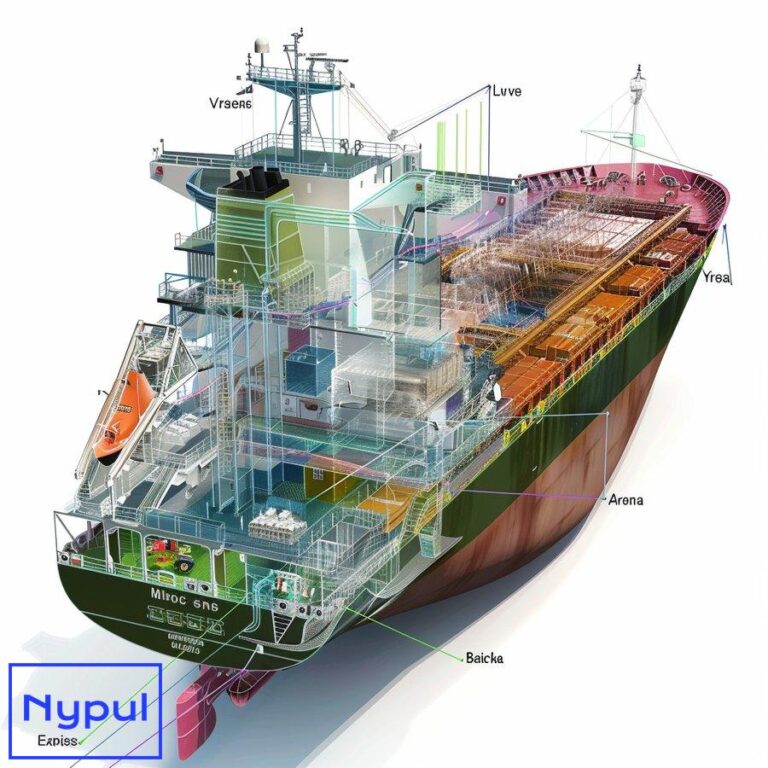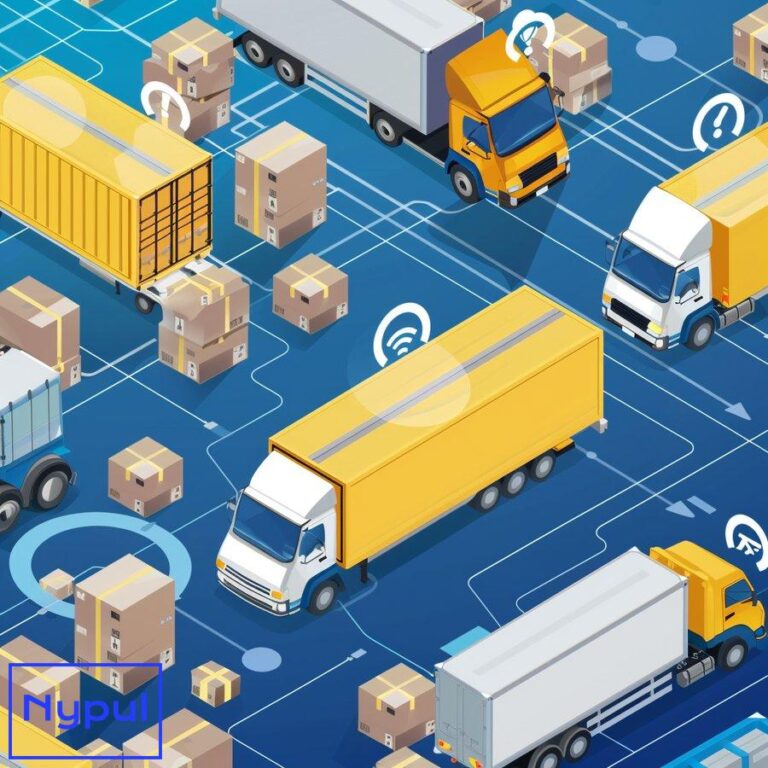What Happens When a Shipment Is Rejected
What constitutes a shipment rejection?
Shipment rejection occurs when a consignee refuses to accept a delivery, marking a critical juncture in the supply chain process. This refusal can stem from various factors, each carrying significant implications for both the shipper and the receiver.

Damaged Goods
One of the primary reasons for shipment rejection is the arrival of damaged goods. When products reach their destination in a compromised state, receivers often exercise their right to refuse acceptance. Damage can manifest in several forms:
Physical Damage: Visible harm to the product or its packaging, such as dents, tears, or breakage.
Water Damage: Evidence of moisture exposure, which can be particularly detrimental for electronics, paper products, or hygroscopic materials.
Temperature Excursions: For temperature-sensitive items like pharmaceuticals or perishable foods, any deviation from the required temperature range during transit can lead to rejection.
The extent of damage plays a crucial role in the decision-making process. Minor cosmetic issues might be overlooked, but significant damage that affects the product’s functionality or safety will almost certainly result in rejection.
Incorrect or Incomplete Orders
Discrepancies between the ordered items and the delivered goods represent another common ground for rejection. These inconsistencies can take several forms:
Wrong Products: The delivery contains items that were not part of the original order.
Quantity Mismatch: The number of items received does not align with the quantity ordered, whether it’s an excess or shortage.
Missing Components: In the case of multi-part orders, the absence of crucial components can render the shipment incomplete and subject to rejection.
Such errors can disrupt the receiver’s operations, leading to potential losses and necessitating the refusal of the entire shipment.
Late Deliveries
Time-sensitive shipments that arrive outside the agreed-upon delivery window may face rejection. The criticality of timely delivery varies across industries:
Retail: Late arrivals can miss crucial sales periods or promotional events.
Manufacturing: Delayed components can halt production lines, incurring substantial costs.
Perishables: Products with limited shelf life may lose significant value or become unusable if not delivered on time.
The tolerance for late deliveries often depends on the nature of the business relationship and the potential impact of the delay on the receiver’s operations.
Documentation Issues
Proper documentation is vital in the shipping process, and its absence or inaccuracy can lead to rejection:
Missing Paperwork: Lack of essential documents such as bills of lading, customs forms, or certificates of origin.
Inaccurate Information: Discrepancies in product descriptions, quantities, or other critical details on the shipping documents.
Incomplete Customs Documentation: For international shipments, inadequate or incorrect customs paperwork can result in rejection at the port of entry.
These documentation issues can create legal and regulatory complications, prompting receivers to refuse shipments until the proper paperwork is in order.
Quality Control Failures
Many businesses implement stringent quality control measures, and shipments that fail to meet these standards face rejection:
Substandard Materials: Products that don’t meet the specified quality criteria or industry standards.
Contamination: Evidence of foreign substances or materials that compromise the product’s integrity.
Batch Inconsistencies: Variations in product characteristics that deviate from the agreed-upon specifications.
Quality control rejections are particularly common in industries with strict regulatory oversight, such as pharmaceuticals, food production, and aerospace.
Unauthorized or Fraudulent Shipments
In some cases, shipments may be rejected due to suspicions of fraud or lack of proper authorization:
Unsolicited Goods: Products sent without a corresponding order or agreement.
Counterfeit Items: Suspicion or detection of fake or imitation products.
Security Concerns: Shipments that raise red flags during security screenings or appear to violate safety regulations.
These situations often require immediate attention and may involve legal authorities in addition to standard rejection procedures.
Understanding the multifaceted nature of shipment rejections is crucial for all parties involved in the supply chain. It underscores the importance of meticulous planning, clear communication, and robust quality control measures throughout the shipping process. By recognizing these potential pitfalls, businesses can work proactively to minimize the occurrence of rejections and streamline their logistics operations.
How are rejected shipments immediately handled?
When a shipment is rejected, a series of immediate actions are set into motion to address the situation swiftly and efficiently. The handling of rejected shipments requires a coordinated effort between various stakeholders, including the carrier, shipper, receiver, and sometimes third-party logistics providers.
Initial Notification and Documentation
The rejection process typically begins with formal notification from the receiver to the carrier or shipper. This communication is crucial and should include:
Reason for Rejection: A clear explanation of why the shipment is being refused.
Photographic Evidence: If applicable, images documenting the reason for rejection (e.g., damage, incorrect items).
Rejection Form: A completed rejection form or report detailing the specifics of the situation.
Proper documentation at this stage is vital for any subsequent claims or dispute resolution processes.
Securing the Shipment
Once a rejection is initiated, the immediate concern is the security and integrity of the goods:
Isolation: Rejected items are typically segregated from accepted inventory to prevent mix-ups.
Preservation: Measures are taken to maintain the condition of the goods, especially for perishables or sensitive materials.
Inventory Check: A thorough count and condition assessment of the rejected items is conducted and documented.
This step ensures that the rejected goods are accounted for and protected from further damage or loss.
Communication Chain
A robust communication network is activated to inform all relevant parties:
Carrier Notification: The delivery driver or local carrier representative is often the first to be informed of the rejection.
Shipper Alert: The original sender is notified promptly about the rejection and its reasons.
Internal Stakeholders: Relevant departments within the receiving organization (e.g., purchasing, quality control) are informed.
Third-Party Logistics (3PL) Involvement: If a 3PL is managing the shipment, they are brought into the loop to coordinate next steps.
Clear and prompt communication helps in formulating an appropriate response and initiating the resolution process.
Immediate Decision-Making
Quick decisions must be made regarding the fate of the rejected shipment:
Return to Sender: Arranging for the immediate return of goods to the shipper.
Local Holding: Securing temporary storage for the shipment while a solution is determined.
Rework or Repackaging: In some cases, minor issues can be addressed on-site to salvage the shipment.
Disposal: For certain perishables or hazardous materials, immediate disposal may be necessary.
The chosen action depends on factors such as the nature of the goods, the reason for rejection, and the shipper’s instructions.
Carrier’s Role and Responsibilities
The carrier plays a pivotal role in the immediate handling of rejected shipments:
Inspection and Reporting: Carriers often conduct their own inspection to verify the rejection reasons.
Documentation Updates: Updating shipping documents to reflect the rejection and any subsequent actions.
Coordination of Next Steps: Working with the shipper to determine the appropriate course of action for the rejected goods.
Carriers must balance the interests of both the shipper and receiver while adhering to regulatory requirements and company policies.
Initiation of Claims Process
If the rejection is due to damage or loss, the claims process is often initiated immediately:
Claim Filing: The shipper or receiver may file a claim with the carrier or insurance provider.
Evidence Gathering: Collecting and preserving evidence to support the claim, including photographs and inspection reports.
Notification to Insurers: Informing relevant insurance companies about the potential claim.
Prompt initiation of the claims process is crucial for ensuring proper compensation and resolution.
Contingency Planning Activation
Many companies have contingency plans in place for shipment rejections:
Alternative Sourcing: For critical supplies, activating backup suppliers to maintain operations.
Customer Communication: If the rejection affects downstream customers, initiating customer service protocols.
Production Adjustments: In manufacturing contexts, adjusting production schedules to account for the rejected materials.
These plans help minimize the operational impact of the rejection and maintain business continuity.
Regulatory Compliance Measures
Certain rejections, especially in regulated industries, require immediate regulatory compliance actions:
Customs Notifications: For international shipments, informing customs authorities about the rejection and any planned returns.
Hazardous Materials Handling: Ensuring proper protocols are followed for the handling and potential return of hazardous goods.
Record-Keeping: Maintaining detailed records of the rejection and subsequent actions for compliance audits.
Adhering to regulatory requirements is crucial to avoid legal complications and maintain good standing with authorities.
Technology Utilization
Modern logistics operations often leverage technology for efficient handling of rejections:
Real-Time Updates: Using tracking systems to update the shipment status and inform all parties.
Digital Documentation: Employing electronic systems for quick transmission of rejection reports and supporting documents.
Analytics Triggers: Activating data analysis processes to assess the impact and identify patterns in rejections.
Technology plays a key role in streamlining the immediate response to shipment rejections and facilitating swift resolution.
The immediate handling of rejected shipments is a complex process that requires quick thinking, clear communication, and well-defined procedures. By addressing these situations promptly and effectively, businesses can minimize disruptions, maintain customer satisfaction, and protect their bottom line. The ability to navigate these challenges efficiently often distinguishes successful logistics operations from their competitors.
What inspection processes follow a rejection?
When a shipment is rejected, a thorough inspection process is crucial to determine the extent of the issue, validate the rejection reasons, and decide on the appropriate course of action. This inspection is a critical step that informs all subsequent decisions and potential claims. The process typically involves several stages and may include multiple parties.
Initial Visual Inspection
The first step in the inspection process is a comprehensive visual examination of the rejected shipment:
External Condition Assessment: Checking the outer packaging for signs of damage, tampering, or exposure to adverse conditions.
Seal Integrity: Verifying that any security seals are intact and match the documentation.
Label Verification: Ensuring that all shipping labels and markings are correct and legible.
This initial inspection often occurs at the point of rejection and is typically conducted by the receiving party and the carrier’s representative.
Detailed Physical Examination
Following the visual inspection, a more in-depth physical examination takes place:
Unpacking and Item-by-Item Check: Carefully unpacking the shipment and examining each item individually.
Quantity Verification: Counting all items to confirm that the quantity matches the shipping documents.
Product Specification Comparison: Checking each item against the order specifications to identify any discrepancies.
This stage may involve quality control personnel from the receiving company and sometimes representatives from the shipping company.
Specialized Testing and Analysis
For certain types of goods, specialized testing may be necessary:
Chemical Analysis: For raw materials or chemical products, testing composition and purity.
Mechanical Testing: For machinery or components, conducting functionality and performance tests.
Microbiological Testing: For food, pharmaceuticals, or cosmetics, checking for contamination or spoilage.
These tests are often performed by qualified technicians or third-party laboratories to ensure impartiality and accuracy.
Documentation Review
A thorough examination of all accompanying documentation is essential:
Shipping Manifests: Comparing the physical shipment with the details listed on the manifest.
Certificates of Analysis: Reviewing any quality certificates provided with the shipment.
Customs Documentation: For international shipments, scrutinizing customs paperwork for completeness and accuracy.
This review helps identify any discrepancies that might have led to the rejection or complications in the shipping process.
Photographic and Video Documentation
Visual evidence is crucial for both record-keeping and potential claims:
Detailed Photography: Taking high-resolution photos of damaged items, packaging issues, or other visible problems.
Video Recording: In some cases, recording video of the unpacking process or specific issues with the shipment.
360-Degree Imagery: Using advanced imaging techniques to capture comprehensive views of the shipment condition.
This visual documentation serves as crucial evidence in dispute resolution and insurance claims.
Environmental Condition Verification
For shipments sensitive to environmental factors, specific checks are performed:
Temperature Logging: Reviewing temperature records for cold chain shipments.
Humidity Exposure: Checking for signs of moisture damage or exposure to inappropriate humidity levels.
Shock and Vibration Analysis: Examining data from impact indicators or tilt sensors, if present.
These checks are particularly important for pharmaceuticals, fresh produce, and delicate electronic equipment.
Chain of Custody Examination
Understanding the journey of the shipment can provide insights into potential issues:
Tracking Data Review: Analyzing GPS tracking data to identify any unusual stops or route deviations.
Handover Documentation: Examining signatures and timestamps at each point of transfer in the shipping process.
Security Footage: If available, reviewing CCTV footage from warehouses or transshipment points.
This examination can reveal where and when problems may have occurred during transit.
Regulatory Compliance Verification
For regulated industries, specific compliance checks are necessary:
Safety Regulations: Ensuring that the shipment meets all relevant safety standards and regulations.
Labeling Requirements: Verifying that all required warning labels, ingredient lists, or other mandated information is present and correct.
Licensing and Permit Checks: Confirming that all necessary licenses and permits for the shipment are valid and in order.
These checks are critical in industries such as pharmaceuticals, food, and hazardous materials transport.
Third-Party Inspection Services
In many cases, especially for high-value or disputed shipments, third-party inspection services are engaged:
Independent Surveyors: Hiring neutral experts to conduct a comprehensive inspection and provide an unbiased report.
Specialized Inspection Firms: Engaging companies with expertise in specific types of goods or industries.
Government Inspectors: In some cases, particularly for international trade, government officials may be involved in the inspection process.
These third-party inspections provide an objective assessment that can be crucial in resolving disputes between shippers and receivers.
Digital and Technological Inspection Tools
Advanced technology is increasingly used in the inspection process:
Barcode and RFID Scanning: Using digital tools to quickly verify product identities and quantities.
Artificial Intelligence Analysis: Employing AI algorithms to analyze images and detect anomalies or damage patterns.
Blockchain Verification: In some advanced supply chains, using blockchain technology to verify the authenticity and journey of products.
These technological tools enhance the speed and accuracy of inspections, particularly for large or complex shipments.
Report Compilation and Distribution
The final step in the inspection process is the creation of a comprehensive report:
Detailed Findings: Documenting all observations, test results, and conclusions from the inspection.
Photographic Evidence: Including all relevant images and videos collected during the inspection.
Recommendations: Providing suggestions for resolution or further action based on the inspection findings.
This report is typically distributed to all relevant parties, including the shipper, receiver, carrier, and any involved insurance companies or regulatory bodies.
The inspection process following a shipment rejection is a critical component in resolving logistics disputes and maintaining supply chain integrity. It requires a meticulous approach, often involving multiple stakeholders and specialized expertise. By conducting thorough and well-documented inspections, companies can make informed decisions about rejected shipments, fairly resolve disputes, and implement improvements to prevent future rejections. This process not only addresses immediate concerns but also contributes to long-term enhancements in shipping practices and quality control measures.
What options exist for managing rejected goods?
When faced with rejected goods, businesses must navigate a complex decision-making process to determine the most appropriate course of action. The management of rejected shipments requires careful consideration of various factors, including the nature of the goods, the reason for rejection, legal and regulatory requirements, and the potential for salvage or rework. Here are the primary options available for managing rejected goods, along with their implications and considerations.
Return to Sender
Returning the goods to the original shipper is often the default option for many rejected shipments:
Reverse Logistics: Arranging transportation back to the sender’s facility.
Cost Considerations: Determining who bears the cost of return shipping (typically the shipper).
Customs Implications: For international shipments, navigating re-export procedures and documentation.
This option is particularly suitable when the goods are in good condition but were simply sent in error or are no longer needed by the receiver.
Rework or Reprocessing
In some cases, minor issues can be addressed through rework:
On-Site Corrections: Fixing labeling errors, repackaging, or minor repairs at the receiving location.
Return for Reprocessing: Sending goods back to the manufacturer for more extensive rework.
Quality Control Checks: Implementing additional inspections to ensure reworked items meet standards.
Rework can be a cost-effective solution for salvaging shipments with minor defects or packaging issues.
Discounted Sale
For goods with cosmetic damage or slight imperfections, selling at a discount might be viable:
Secondary Markets: Identifying alternative buyers who may accept imperfect goods.
Outlet ChannelsDiscounted Sale**
For goods with cosmetic damage or slight imperfections, selling at a discount might be viable:
Secondary Markets: Identifying alternative buyers who may accept imperfect goods.
Outlet Channels: Utilizing discount retailers or online platforms to sell damaged items at reduced prices.
Clearance Sales: Running promotional sales to quickly move rejected inventory while minimizing losses.
This approach can help recover some costs associated with rejected goods while also clearing out excess inventory.
Donation or Charitable Contribution
When items are still usable but cannot be sold, donating them to charitable organizations is a compassionate option:
Tax Deductions: Businesses may benefit from tax deductions for donated goods, depending on local regulations.
Community Engagement: Supporting local charities can enhance a company’s public image and community relations.
Logistical Considerations: Arranging for transportation and ensuring compliance with donation guidelines.
This option is particularly suitable for perishable items that are still safe for consumption or non-perishable goods that can benefit those in need.
Disposal or Destruction
In cases where goods are unsalvageable, safe disposal may be the only option:
Environmental Compliance: Following regulations for the disposal of hazardous materials or waste.
Destruction Protocols: Implementing procedures to ensure that destroyed items cannot be reused or resold.
Documentation of Disposal: Keeping records of how and when items were disposed of for compliance and audit purposes.
This option is essential for maintaining safety and compliance, especially in industries dealing with hazardous materials or sensitive products.
Storage for Future Sale
If immediate action is not feasible, storing rejected goods for future sale may be an option:
Warehousing Solutions: Utilizing existing warehouse space or third-party storage facilities to hold rejected items.
Inventory Management Systems: Tracking stored goods to ensure they are not forgotten and can be sold later when market conditions improve.
Cost Implications: Considering the costs associated with storage, including handling and potential deterioration over time.
This approach allows businesses to wait for more favorable market conditions before deciding on the ultimate fate of the rejected goods.
Legal Considerations and Compliance
Managing rejected goods often involves navigating legal and regulatory landscapes:
Contractual Obligations: Reviewing contracts with suppliers and customers to understand responsibilities regarding rejected shipments.
Regulatory Compliance: Ensuring that any disposal methods comply with local, state, and federal regulations, particularly for hazardous materials.
Liability Issues: Assessing potential liability arising from the rejection, especially if it involves safety concerns or breaches of contract.
Legal considerations play a crucial role in determining how rejected goods are managed, making it essential for businesses to consult legal experts when necessary.
The management of rejected goods is a multifaceted process that requires careful consideration of various options. Each choice carries its own implications, costs, and potential benefits. By evaluating these options thoughtfully, businesses can minimize losses associated with rejected shipments while maintaining compliance with legal requirements and upholding their reputation in the marketplace.
How do shipment rejections impact finances?
Shipment rejections can have significant financial repercussions for all parties involved in the logistics process. Understanding these impacts is crucial for businesses aiming to mitigate losses and maintain profitability. The financial implications of shipment rejections can be categorized into several key areas:
Direct Costs Associated with Rejections
The immediate costs incurred due to shipment rejections can be substantial:
-
Return Shipping Fees: The cost of transporting rejected goods back to the sender can add up quickly, especially if multiple shipments are involved.
-
Inspection Costs: Expenses related to inspecting rejected shipments, including labor costs for quality control personnel and any third-party inspection services utilized.
-
Rework Costs: If reworking or repackaging is required, businesses must factor in labor costs, materials needed for corrections, and any downtime incurred during this process.
These direct costs can accumulate rapidly, significantly impacting a company’s bottom line if not managed effectively.
Lost Revenue Opportunities
When shipments are rejected, businesses may miss out on potential revenue:
-
Sales Delays: Delays in receiving necessary inventory can lead to stockouts, preventing sales opportunities.
-
Customer Dissatisfaction: Rejected shipments can result in unhappy customers who may choose to take their business elsewhere as a result of poor service or product availability.
-
Market Share Losses: In competitive markets, consistently failing to deliver on time or meeting quality standards can lead to long-term losses in market share as customers seek more reliable suppliers.
These lost revenue opportunities highlight the importance of maintaining high standards in logistics operations to avoid rejection scenarios altogether.
Impact on Cash Flow
The financial strain caused by shipment rejections can also affect cash flow management:
-
Delayed Payments from Customers: If customers experience delays due to rejected shipments, they may postpone payments until issues are resolved.
-
Increased Inventory Holding Costs: Storing rejected goods incurs additional costs that can strain cash flow if inventory levels remain high without corresponding sales.
-
Potential Write-Offs or Discounts on Future Sales: Businesses may need to offer discounts on future orders to retain customers affected by shipment rejections, further impacting cash flow.
Effective cash flow management becomes crucial during periods of high rejection rates as companies navigate these challenges.
Insurance Implications
Shipment rejections can also influence insurance considerations:
-
Claims Processing Costs: If rejections lead to claims against carriers or insurance policies, businesses must account for administrative costs associated with filing claims and gathering necessary documentation.
-
Increased Premiums: Frequent shipment rejections may signal higher risk profiles to insurers, potentially leading to increased premiums for coverage.
-
Coverage Limitations on Certain Goods: Some insurance policies may have exclusions related to specific types of products or damages that could affect claims related to rejected shipments.
Understanding the implications of insurance coverage is essential for managing financial risks associated with shipment rejections effectively.
What legal considerations arise from rejected shipments?
The legal landscape surrounding shipment rejections is complex and multifaceted. Various laws, regulations, and contractual obligations come into play when dealing with rejected shipments. Understanding these legal considerations is essential for both shippers and receivers to navigate potential disputes effectively. Here are some key legal aspects related to shipment rejections:

Contractual Obligations
Contracts between shippers and receivers typically outline specific terms regarding delivery expectations:
-
Delivery Terms and Conditions: Contracts often specify acceptable delivery conditions. If a shipment fails to meet these standards (e.g., damaged goods), it may constitute a breach of contract.
-
Liability Clauses: Many contracts include clauses that define liability in case of loss or damage during transit. Understanding these clauses helps determine who bears responsibility in case of rejection.
-
Force Majeure Provisions: Unforeseen circumstances (e.g., natural disasters) affecting delivery might invoke force majeure clauses that relieve parties from liability under specific conditions.
Reviewing contracts thoroughly before disputes arise is critical in managing legal risks associated with shipment rejections.
Regulatory Compliance
Certain industries are subject to strict regulations governing shipping practices:
-
Food Safety Regulations: For food products, compliance with regulations set by agencies like the FDA is crucial. Rejected food shipments must adhere to safety standards during handling and disposal.
-
Pharmaceutical Regulations: Pharmaceuticals face stringent requirements regarding temperature control and handling. Non-compliance can lead not only to rejection but also potential legal consequences.
-
Hazardous Materials Regulations: Shipments containing hazardous materials must comply with specific regulations concerning labeling, handling, and disposal. Violations could result in severe penalties.
Understanding industry-specific regulations helps businesses navigate the complexities surrounding shipment rejections while minimizing legal exposure.
Liability Issues
Liability concerns often arise following shipment rejections:
-
Negligence Claims: If a party’s negligence contributed to the rejection (e.g., improper packaging), they may face liability claims from affected parties.
-
Breach of Warranty Claims: If products fail to meet quality expectations outlined in warranties or guarantees, shippers could face breach of warranty claims from receivers.
-
Third-party Liability: In some cases, third parties (e.g., carriers) may also bear liability depending on contractual agreements or negligence during transit.
Understanding potential liability issues allows businesses to prepare defensively against claims resulting from shipment rejections.
Dispute Resolution Mechanisms
When disputes arise over rejected shipments, various mechanisms exist for resolution:
-
Negotiation: Many disputes are resolved through direct negotiation between parties involved. Clear communication about issues leading to rejection often facilitates resolution without escalation.
-
Mediation: In cases where negotiation fails, mediation offers a neutral third party’s assistance in reaching an agreement without resorting to litigation.
-
Arbitration: Some contracts include arbitration clauses requiring disputes related to shipping issues be settled through arbitration rather than court proceedings. This process tends to be faster but may limit appeal options.
Understanding available dispute resolution mechanisms helps parties navigate conflicts arising from shipment rejections effectively while minimizing costs associated with litigation.
Insurance Considerations
Legal aspects surrounding insurance coverage play a vital role in managing risks associated with shipment rejections:
-
Policy Coverage Limits: Businesses must understand their insurance policies’ coverage limits regarding lost or damaged shipments due to rejection scenarios.
-
Claims Process Requirements: Familiarity with claims processes ensures timely filing after a rejection occurs; delays could jeopardize recovery efforts.
-
Exclusions Clauses: Some policies contain exclusions related specifically to certain types of damages (e.g., cosmetic damage). Understanding these exclusions helps manage expectations regarding coverage availability following a rejection incident.
Navigating insurance considerations effectively mitigates financial risks associated with legal liabilities stemming from rejected shipments.
Conclusion
Legal considerations surrounding shipment rejections encompass various aspects ranging from contractual obligations and regulatory compliance issues through liability concerns down dispute resolution mechanisms—all requiring careful navigation by both shippers and receivers alike. By understanding these complexities upfront—alongside implementing robust policies governing shipping practices—businesses can minimize risks while ensuring smooth operations within their supply chains despite challenges posed by occasional product refusals along the way!
How can technology improve rejection management?

Technology plays an increasingly vital role in enhancing the efficiency and effectiveness of rejection management processes within logistics operations. By leveraging various technological tools and solutions, businesses can streamline their response strategies when faced with rejected shipments. Here are several ways technology contributes positively towards improving rejection management:
Real-Time Tracking Systems
Implementing real-time tracking systems allows stakeholders greater visibility throughout the shipping process:
-
Location Tracking: GPS-enabled tracking provides accurate information about where shipments are at any given moment—helping identify potential issues before they escalate into full-blown rejections.
-
Condition Monitoring Sensors: IoT devices equipped with temperature/humidity sensors monitor environmental conditions during transit—alerting stakeholders if products deviate outside acceptable ranges that might lead towards rejection scenarios later down the line!
These tracking systems enable proactive measures rather than reactive responses once problems arise—ultimately reducing instances leading towards unnecessary refusals altogether!
Automated Documentation Processes
Automation streamlines documentation processes associated with shipping operations significantly:
-
Digital Paperwork Management: Utilizing electronic document management systems reduces reliance on paper-based documentation—minimizing errors related specifically towards missing/inaccurate paperwork upon delivery which commonly leads towards refusals!
-
Automated Alerts & Notifications: Setting up automated alerts ensures all relevant parties receive timely notifications regarding critical updates (e.g., changes in delivery status)—facilitating quicker resolutions whenever issues arise!
This automation enhances overall efficiency while minimizing human error—contributing positively towards reducing instances where miscommunication results ultimately leads towards unnecessary product refusals!
Data Analytics Tools
Data analytics tools provide valuable insights into patterns surrounding shipment rejections over time:
-
Trend Analysis: Analyzing historical data enables organizations identify recurring issues contributing towards higher rates of refusal—allowing them implement targeted corrective actions proactively before problems escalate!
-
Predictive Analytics Models: Leveraging machine learning algorithms helps predict future trends based on past behaviors—enabling companies anticipate potential challenges ahead thereby mitigating risks proactively!
Utilizing data analytics fosters continuous improvement within logistics operations—ultimately leading towards fewer occurrences resulting ultimately leading towards unnecessary product refusals!
Mobile Applications for Communication
Mobile applications facilitate seamless communication between stakeholders involved throughout logistics processes:
-
Instant Messaging Features: Enabling real-time messaging between drivers/shippers/receivers enhances collaboration whenever problems arise—allowing quick resolutions without prolonged delays!
-
Photo Sharing Capabilities: Allowing users share images documenting any damages/issues encountered during transit simplifies verification processes significantly—reducing time spent resolving disputes later down the line!
These mobile applications enhance communication efficiency—ensuring all relevant parties remain informed throughout every stage within logistics operations thereby minimizing chances leading towards unnecessary product refusals!
Blockchain Technology
Blockchain technology offers enhanced transparency across supply chains by providing immutable records concerning every transaction made along each step taken during transportation processes:
-
Tamper-Proof Records: Utilizing blockchain ensures all records remain secure/tamper-proof thereby preventing fraudulent activities which could contribute towards higher rates leading ultimately resulting towards product refusals!
-
Smart Contracts Implementation: Implementing smart contracts automates agreements between parties involved ensuring compliance requirements met consistently throughout every transaction made thereby reducing chances leading ultimately resulting towards unnecessary product refusals!
By harnessing blockchain technology organizations foster increased trust among stakeholders while simultaneously enhancing overall efficiency across supply chains ultimately leading towards fewer instances resulting ultimately leading towards unnecessary product refusals!
Conclusion
Technology serves as an invaluable asset within modern logistics operations when it comes down managing challenges posed by occasional product refusals along transportation journeys! From real-time tracking systems through automated documentation processes alongside data analytics tools coupled mobile applications facilitating seamless communication—all contribute positively towards enhancing efficiency/effectiveness surrounding rejection management strategies employed across diverse industries! By embracing these technological advancements organizations position themselves better navigate complexities inherent within today’s fast-paced global marketplace ultimately reducing instances where miscommunication leads unnecessarily resulting ultimately leading towards unwanted product refusals along their journeys!
What strategies prevent future shipment rejections?
Preventing future shipment rejections requires a proactive approach involving strategic planning across multiple facets of logistics operations. By identifying common causes behind past refusals and implementing targeted strategies aimed at addressing these issues head-on—businesses can significantly reduce occurrences leading ultimately resulting toward unwanted product refusals down-the-line! Here are several effective strategies organizations should consider adopting within their operational frameworks moving forward:
1. Enhanced Quality Control Measures
Implementing robust quality control measures throughout production/shipping processes helps ensure products meet established standards before leaving facilities:

Regular Inspections
Conduct regular inspections at various stages along production lines prior dispatching items outwards—ensuring any defects identified early enough preventing them reaching end-users thus minimizing chances leading toward unwanted product refusals later down-the-line!
Supplier Audits
Perform audits on suppliers regularly assessing their adherence quality standards established beforehand—ensuring consistency across all incoming materials utilized within production cycles thereby reducing risks associated poor-quality inputs contributing toward higher rates leading ultimately resulting toward unwanted product refusals later down-the-line!
2. Improved Communication Channels
Establishing clear communication channels among all stakeholders involved within logistics processes enhances collaboration whenever problems arise enabling quick resolutions without prolonged delays contributing positively toward preventing future occurrences unwanted product refusals down-the-line!
Regular Meetings
Hold regular meetings among team members involved discussing challenges faced previously identifying areas needing improvement collaboratively working together developing actionable plans addressing those concerns directly thus minimizing chances leading toward unwanted product refusals later down-the-line!
Real-time Updates
Utilize technology solutions providing real-time updates concerning order statuses ensuring everyone remains informed throughout every stage within logistics operations thereby reducing chances miscommunication occurring ultimately resulting toward unwanted product refusals down-the-line!
3. Comprehensive Training Programs
Investing in comprehensive training programs equips employees across departments essential knowledge skills required effectively managing challenges posed by occasional product refusals along transportation journeys!
Cross-training Employees
Cross-train employees across different departments fostering better understanding roles/responsibilities held by others enabling smoother collaboration whenever problems arise thus minimizing chances miscommunication occurring ultimately resulting toward unwanted product refusals down-the-line!
Ongoing Education Initiatives
Implement ongoing education initiatives keeping staff updated latest industry trends best practices ensuring everyone equipped knowledge needed effectively navigating complexities inherent within today’s fast-paced global marketplace thus reducing risks associated future occurrences unwanted product refusals down-the-line!
4. Data-driven Decision Making
Leveraging data analytics tools enables organizations make informed decisions based upon historical trends/patterns observed previously helping identify root causes behind past failures thus allowing them implement targeted corrective actions proactively before problems escalate further contributing positively toward preventing future occurrences unwanted product refusals down-the-line!
Historical Data Analysis
Analyze historical data identifying recurring issues contributing higher rates leading ultimately resulting toward unwanted product refusals enabling companies implement corrective actions proactively before problems escalate further thus minimizing chances miscommunication occurring ultimately resulting toward unwanted product refusals down-the-line!
Predictive Analytics Models
Utilize predictive analytics models forecasting potential challenges ahead based upon past behaviors allowing companies anticipate/address risks proactively helping minimize instances where miscommunication leads unnecessarily resulting ultimately leading toward unwanted product refusals along their journeys!
5. Streamlined Documentation Processes
Ensuring accurate documentation accompanies every shipment minimizes confusion/errors arising concerning order details thus reducing risks associated future occurrences unwanted product refusals down-the-line!
Digital Documentation Management Systems
Implement digital document management systems simplifying paperwork processes reducing reliance paper-based documentation minimizing errors related missing/inaccurate paperwork upon delivery which commonly leads toward refusals thus enhancing overall efficiency surrounding logistical operations while simultaneously preventing future occurrences unwanted product refusals along their journeys!
Automated Alerts & Notifications
Set up automated alerts notifying relevant parties concerning critical updates (e.g., changes delivery status) facilitating quicker resolutions whenever issues arise thus minimizing chances miscommunication occurring ultimately resulting toward unwanted product refusals down-the-line!
Conclusion
Preventing future shipment rejections requires strategic planning involving enhanced quality control measures improved communication channels comprehensive training programs data-driven decision-making streamlined documentation processes—all aimed directly addressing root causes behind past failures effectively navigating complexities inherent within today’s fast-paced global marketplace ultimately reducing instances where miscommunication leads unnecessarily resulting ultimately leading toward unwanted product refusals along their journeys! By adopting these proactive strategies organizations position themselves better manage challenges posed by occasional product refusals ensuring smooth operations within their supply chains despite obstacles encountered along way!





